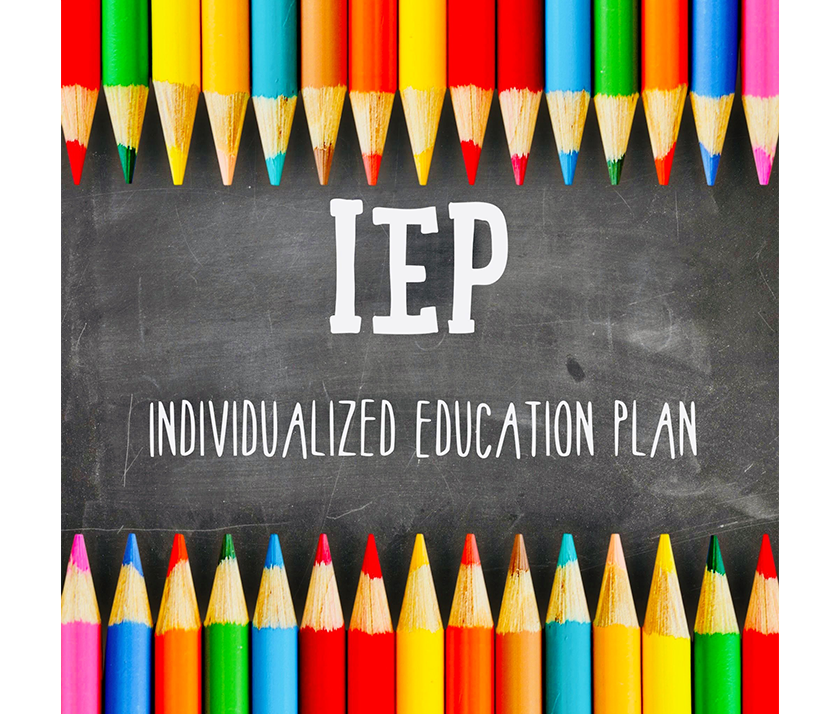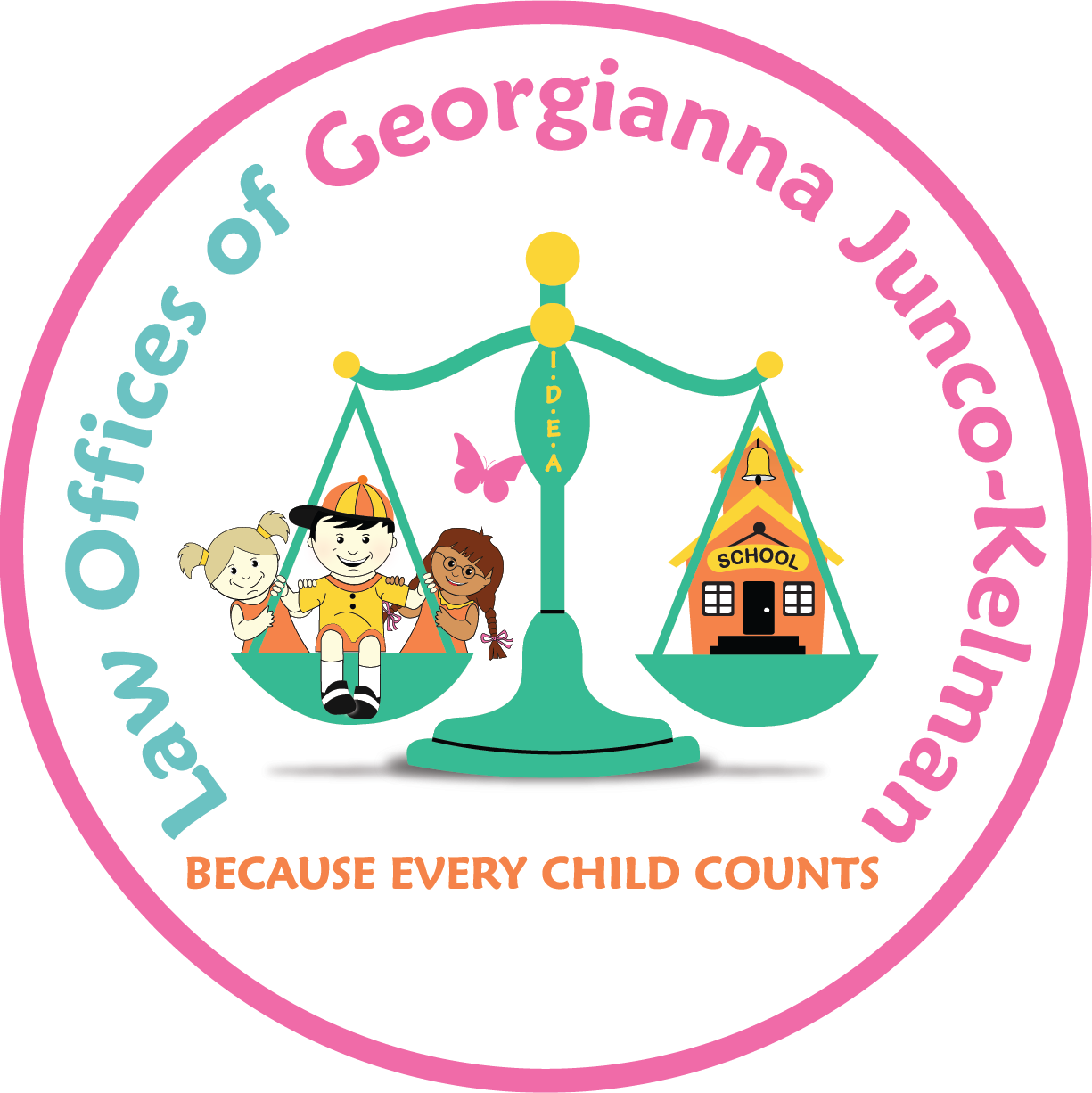
The IEP pROCESS
IEP is an acronym that stands for Individualized Education Program (alternatively called an “Individualized Education Plan,” “Individual Education Plan,” or some combination thereof).
At a glance:
- An IEP is the specialized educational plan that is created for a student once that student has been assessed and deemed to qualify for special education services due to a disability negatively impacting learning and thus his/her access to the academic curriculum.
- An IEP lays out the special education instruction, supports, and services a student needs to be successful in school.
- IEPs can be implemented only in public education (not private school) starting in Pre-K at the age of 3 through 12th grade. But students with IEPs have until the age of 22 to obtain their diplomas or certificate of completion depending on what educational track they are on. Private school students may qualify for an Individual Services Plan (ISP) as long as they remain in a non-public school setting.


The IEP is a legally binding document that spells out exactly what special education services your child will receive and why. It is the written educational plan for a student with disabilities, developed by a team of professionals (teachers, therapists, school administrators etc.) and the child’s parents, and implemented to provide specially designed instruction and related services in accordance with federal legal mandates, specifically The Individuals with Disabilities Education Act (IDEA). It is designed to meet the unique needs of one child. The IDEA, which was signed into law in 1990, requires all American public schools to provide children with disabilities a Free Appropriate Public Education or FAPE. The primary essential tool for achieving this is through the creation and implementation of an IEP. The IEP is a legally binding contract which precisely details what special education services a student with a disability will receive, and why.
The IEP is theoretically collaboratively designed between Parents, teachers, service providers and administrators at the Student’s IEP meeting. The IEP guides the delivery of special education supports and services for the student with a disability.
The IEP is individually designed to meet the unique needs of one child. The IDEA requires all American public schools to provide children with disabilities a Free Appropriate Public Education or FAPE. The primary essential and critical tool for providing a FAPE is the IEP.
An IEP is more than just a written legal document or “plan.” It is a clear road map that delineates the exact program of special education instruction, supports, and services a student requires in order to make meaningful progress and thrive in school. There are many benefits to having an IEP and having an IEP facilitates students and families with many legal protections as well. It legally requires Districts to ensure that parents are substantively involved in the decision-making process that impacts their child’s education. It also provides students with disabilities certain rights related to the disciplinary action that Districts may engage in, as often times the behavior in question is rooted in the student’s disability and cannot be addressed punitively, rather with positive behavior intervention strategies designed by expert behavior interventionists.
The IEP is theoretically collaboratively designed between Parents, teachers, service providers and administrators at the Student’s IEP meeting. Together, parents and schools form an IEP team and use the results to create a program of services and supports tailored to meet the student’s needs.
The IEP process begins with formal evaluations conducted by the District that may demonstrate student’s strengths and challenges and determine whether the findings warrant eligibility for an IEP and an ensuing appropriate educational plan. The special education evaluation determines if a student is eligible for special education services and if so, what programs are appropriate. School districts have an affirmative duty to identify, locate and evaluate children with disabilities. This duty, known as “Child Find” applies to children residing within the district who have or are suspected of having disabilities and, therefore, may need special education.
The IEP guides the delivery of special education supports and services for the student with a disability and at the very least must convene once yearly to review student progress and discern what changes may be needed to the IEP. But once an IEP is in place Parents may call an IEP meeting at any time during the school year to address any concerns; the school district must convene the meeting within 30 days of the parent’s request.
The IEP Process Is Comprised of 5 Critical Steps:
- Initial Referral
If the student is showing signs of struggle in school an initial referral for formal special education assessments can be made by a parent or a teacher. All that is required is that the student be demonstrating some sign that he/she may struggle from some type of disability that may be impacting learning. Parents DO NOT need to show that the student has an actual condition impacting learning in order for testing to take place. Remember that it is a very low threshold which legally binds the district to assess. The request should be made in writing.
- Evaluation
After receiving a referral for assessment, the school district must:
- Respond within 15 days of the request with an Assessment Plan for the Parents to sign (assessments cannot be conducted without Parental written consent so the Parents must sign the assessment plan), along with a copy of the parent’s rights and responsibilities; or
- If the District rejects the request for assessments because it may not deem them necessary for any reason, Parents must be provided the notice of denial in writing stating the reasons for the denial and be provided with their rights and responsibilities so that the parents know which legal steps to take next. There is an appellate mechanism that parents can pursue to contest the District’s refusal to assess. (Remember that the threshold for assessment is low and if the District is refusing to do so it is likely acting unlawfully).
- Eligibility for the IEP
After the Assessment Plan is signed and returned, the School District has 60 calendar days in which it must complete the assessment(s) which will determine eligibility of the student, generate reports with the assessment findings (always request your reports ahead of the meeting in writing as District’s often do not provide these until the day of the meeting, which does not allow parents to be fully prepared to meaningfully participate since they have not had chance to review the reports), and hold an IEP meeting to review findings and determine eligibility (see below for the qualifying federal categories).
- IEP Meeting
Following the student’s evaluation, the IEP team is assembled. All team members must be present and the District cannot excuse the absence of any legally required team member without parent’s written consent. Each assessor will present his/her findings and make a recommendation as to services. Typically the school psychologist presents findings first and reviews the various eligibilities that may have been considered depending on the deficits illustrated by the testing and will make a recommendation for the most appropriate eligibility. Once the Student is deemed to meet any of the federal categories that qualifies a student for an IEP, the team writes the IEP for the student. The IEP includes goals which are created to address the areas of need, which are reviewed one year later to determine progress or lack thereof, services to be provided and the placement comprising of the least restrictive environment in which the student can make meaningful educational gain.
- Implementation
After the IEP is signed in consent by the parent(s) and returned to the school, the School District must implement it and the delivery of services must begin. The written IEP will include your child’s classification, placement, and services and binds the District to systematically provide the services and supports contained therein.
There are 13 Federal Categories Qualifying Students for an IEP:
In order for the IEP team to QUALIFY a child for services, the student 1) must be found to have one of the 13 categories of special education and; 2) it must adversely affect his/her educational performance.
- Specific Learning Disability (SLD) - This is an umbrella term for conditions that affect a child’s ability to read, write, listen, speak, reason, or do math. Dyslexia, dysgraphia (impaired writing ability), and dyscalculia (impaired mathematical ability) fall under this category.
- Other Health Impairment (OHI) - Another umbrella term that covers conditions that limit a child’s energy, alertness, or strength. ADD and ADHD fall under this category.
- Autism - (AUT) This category mainly covers a child’s behavior, and social and communication skills.
- Emotional Disturbance (ED) - This category covers such disorders as anxiety disorder, schizophrenia, bipolar disorder, obsessive-compulsive disorder, and depression.
- Speech or Language Impairment (SLI) - Includes stuttering, impaired articulation, and voice impairment.
- Visual Impairment (VI) - This includes both partial and total blindness. Vision problems that can be corrected by eyewear do not qualify.
- Deafness - The complete inability to hear.
- Hearing Impairment (HI) - This category covers any type of hearing impairment not covered by deafness.
- Deaf-Blindness - This covers children with both hearing and visual impairment whose needs cannot be met by learning programs for the deaf and blind.
- Orthopedic Impairment (OI) - This includes any impairment to a child’s body, such as cerebral palsy.
- Intellectual Disability – (ID) This category covers children with below average intellectual ability, self-care, or social skills. Down syndrome falls under this category.
- Traumatic Brain Injury (TBI) - Any brain injury caused by an accident or physical force.
- Multiple Disabilities - Having more than one of the conditions listed above, which creates educational needs that cannot be met by a program designed for a specific condition.

The first IEP meeting can be an overwhelming time for any parent. There is so much new information to take in as you begin to learn more and more about special education services and how they can best benefit your child. If you have attended IEP meetings for your child in the past there is a good chance that you have felt shell shocked, dissatisfied and frustrated and if you are visiting us it must be because you are still feeling that way. Our aim is to do everything in our power to make sure that your child’s needs are met and in turn that you feel a sense of relief, satisfaction and closure regarding your child’s services. Our goal is for you to leave the IEP meeting knowing that you understood the process, asked the right questions, knew what you were signing and that the plan formulated meets your child’s every educational need.
If your child is undergoing continuous struggles and you suspect he/she requires more support in school, perhaps your child needs special education support and an IEP to be successful and thrive academically. It is advised that you speak with an experienced special education attorney who can best guide you through the process and apprise you of your and your child’s rights. Our office’s philosophy is that every child can learn and thrive despite of any deficit and each child MUST be accommodated at their pace and be taught how they learn. Our firm is exclusively dedicated to the practice of special education law, and it would be our honor to guide and represent you through what can be a daunting and complex process. For a courtesy consultation, call our office in Studio City at (818) 386-2800.
Trusted Media Advisor
Different. Not Less.
Please reach out to our office so that Georgianna can assist you in the pursuit of securing a meaningful education for your child. We offer a 30-minute complimentary consultation for the analysis of your case.











